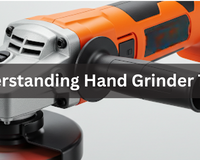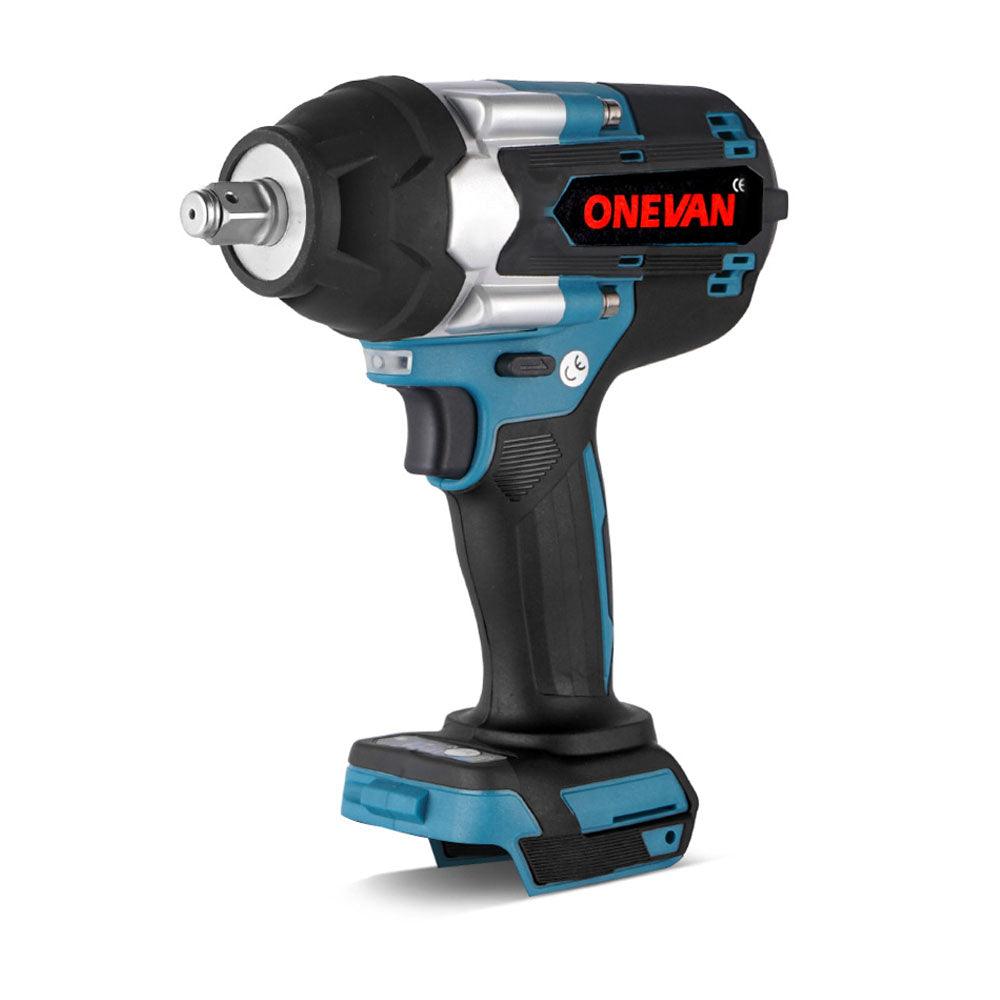Do circular saws cut straight? Cutting straight with a circular saw is not difficult if you follow the right approach. Many DIYers struggle with wavy lines. This guide will help you make clean, straight cuts every time.
Getting straight cuts affects the whole project. Crooked cuts lead to gaps, make assembly harder, and waste materials. Perfect cuts also make your work look professional.
This guide covers everything you need. From saw basics to advanced techniques. We share tips for beginners and pros. However, you should never forget that safety comes first in all steps.
1. Understanding Circular Saws
Before we start cutting, let's understand the tool. Circular saws are versatile, cut many materials, and come in different styles. Knowing your saw helps you work better.
Types of Circular Saws
There are five major types of circular saws, and each one has its pros and cons.
Sidewinder Saws have motors on the side. They're lighter. They work well for most home projects. Most DIYers use these. They're easier to handle for beginners.
Worm-drive saws have motors behind the blade, which generally provide more torque, making them suitable for heavier materials. Pros use these for tough jobs. They cut through thick lumber easily.
Corded Circular Saws plug into outlets. They provide constant power and never run out of battery. They're good for long cutting sessions, but the cord can get in the way.
Cordless Circular Saws use batteries. They offer freedom to move. Modern cordless saws are equipped with advanced battery technology, offering considerable power. However, batteries can die during big projects. Always keep a spare battery charged.
If you want a strong cordless saw for multipurpose jobs, the ONEVAN 180mm 7 Inch Brushless Cordless Circular Saw is a wise choice. It has a special motor whose performance is exceptional and gives an excellent battery life. You can change the cutting angle, and it cuts different materials effortlessly.
Mini Circular Saws are compact versions. They're light and easy to control. Mini circular saws are ideal for cutting thin materials and making small, detailed cuts.
Key Components of a Circular Saw
Understanding the parts helps you use the saw better. These are the main pieces:
The Blade does the cutting. Blades come in many sizes. Most home saws use 7¼-inch blades. The blade spins very fast to cut through the material.
The Base Plate (or shoe) rests on your material. It provides stability. It helps you guide the saw. Most have measurement markings to help with cuts.
The motor powers the saw, and its performance depends on both amps and voltage, influencing cutting efficiency.
The Depth Adjustment Add emphasis on the importance of safety in adjusting blade depth. Set it so the blade extends just below your material. This makes safer, cleaner cuts.
The Bevel Adjustment lets you cut at angles. You can tilt the blade for angled cuts. This is useful for making miters and bevels.
The Handle gives you control. Good saws have comfortable handles. Some have rubber grips to reduce vibration.
The Trigger controls the power. It starts and stops the blade. Some have safety switches too. These prevent accidental starts.
Types of Circular Saw Blades and How to Choose
Blades matter a lot for straight cuts. The wrong blade makes even good technique fail. Here's how to pick the right one:
Blade Teeth Count (TPI) affects your cut quality. More teeth give smoother cuts. Fewer teeth cut faster but rougher. For fine cuts, use 40+ teeth. For rough cuts, 24 teeth work well.
Materials Matter when choosing blades. Wood blades won't work well on metal. Here's a quick guide:
- For wood: Use carbide-tipped blades
- For metal: Use special metal-cutting blades
- For plastic: Use fine-tooth blades or special plastic blades
- For masonry: Use diamond-tipped or abrasive blades
Blade Size must match your saw. Most home saws use 7¼-inch blades. Compact saws might use 6½-inch or smaller blades. Always check your saw's manual.
Kerf Width is the thickness of the cut. Thin-kerf blades remove less material. They need less power. This helps battery-powered saws. Standard kerfs work better for power saws.
Coatings reduce friction. Some blades have non-stick coatings. These help when cutting sappy or resinous woods. They prevent buildup on the blade.
2. Freehand Cutting (Using Visual Alignment) for Accurate Straight Cuts
Freehand cutting means using your eyes and hands. No guides or jigs. It takes practice. But it's a skill worth learning. You can make good cuts without extra tools.
Consider using a cordless circular saw from ONEVAN. ONEVAN’s cordless circular saws offer portability and ease of handling for freehand cuts. Its lightweight design can improve maneuverability.
Step 1: Prepare Your Workpiece
Good preparation prevents problems later. Take the time to set up your workspace properly.
First, clean your work area. Remove clutter. Make sure you have space to move. Check there's room for the cut piece to fall.
Place your material on a stable surface. Sawhorses work great. Space them to support both sides of your cut line. This prevents binding and pinching.
Secure your work with clamps. This stops movement during cutting. But don't block your cut path. Leave enough room for the saw to pass.
Check under your cut line. Make sure there's nothing below. Don't cut into your workbench or sawhorses. Set the cut line beyond your supports.
Step 2: Mark Your Cut Line
Clear marks guide your cut. Take time to mark accurately.
Use a straight edge as a guide. A framing square works well. So does a long level. Place it along your desired cut line.
Mark with a sharp pencil. Draw a clear, thin line. Thick lines make precise cutting harder. For dark materials, use chalk or a white pencil.
Mark both sides if possible. This helps you keep the saw aligned. It's especially helpful for thick materials.
Double-check your measurements. Measure twice and cut once. Make sure your line is where you want your cut.
Step 3: Set Up Your Circular Saw
Proper saw setup is critical. It affects safety and cuts quality.
Set the right blade depth. The blade should extend just ¼ inch below your material. Too deep is dangerous. Too shallow won't cut through.
Check that your blade is sharp. Dull blades cause burning and rough cuts. They also make straight cutting harder.
Make sure the blade is tight. A loose blade wobbles and cuts poorly. Follow your saw's instructions for tightening.
Verify that the blade is square to the base. Unless you're making bevel cuts, the blade should be at 90 degrees. Most saws have stops at this position.
Clear the cord from your path. For corded saws, plan where the cord will be. Keep it away from your cutting path.
Step 4: Position Yourself Correctly
Your stance affects your control. Position yourself for success.
Stand to the side of the saw blade. Never line your body with the blade. This keeps you safer from kickbacks.
Keep your feet shoulder-width apart. This gives you balance. Plant yourself firmly on the ground.
Hold the saw with both hands. One on the main handle and one on the front handle. This gives you maximum control.
Position yourself to see your cut line. Avoid leaning excessively over the saw to maintain a safe distance. Find a position where you can see without awkward postures.
Keep your arms comfortable. Avoid stretching or awkward angles. You need control throughout the cut.
Step 5: Start The Blade Before Contacting Material
The right starting technique prevents jerky cuts.
Turn on the saw before touching the wood. Let the blade reach full speed. This reduces the chance of binding.
Hold the saw firmly but not tensely. Too tight gives less control. Too loose is dangerous.
Align the blade with your mark. Use the notch on the saw base. This shows where the blade will cut.
Keep the saw base flat on the material. Don't tilt the saw. Tilting causes crooked cuts.
Step 6: Guide Tool Along Marked Path
This is where precision matters most. Focus on following your line.
Look ahead on your line. Don't just watch where the blade is now. Look where it's going next.
Use the saw's guide notch. Most saws have a notch that aligns with the blade. Keep this on your line.
Let the saw do the work. Don't force it forward. Apply gentle, consistent pressure.
Keep the base plate fully on the material. This maintains stability. A tilted base makes angled cuts.
Use your dominant hand on the trigger. Your other hand guides the front. This gives the best control.
Step 7: Maintain a Steady Pace Throughout the Process
Consistency is key to straight cuts. Keep your movement smooth.
Move at a steady speed. Too fast forces the saw and causes burning. Too slow can also cause burning.
Listen to the motor. It should maintain a consistent sound. If it bogs down, you're pushing too hard.
Let the blade cut at its own pace. Different materials need different speeds. Hardwoods need slower cutting than softwoods.
Don't stop mid-cut if possible. Stopping and starting can cause marks on your cut line.
Maintain your focus throughout the cut. Don't get distracted. Watch your line and your saw position.
Step 8: Finish Strong By Completing Entire Length
The end of the cut is just as important as the start. Finish with care.
Support the cut-off piece if needed. This prevents it from falling and tearing the wood.
Maintain your grip until the end. Don't relax too soon. Keep the saw stable.
Let the blade stop completely before lifting. Moving the saw with a spinning blade can cause marks.
Check your cut immediately. Look for any areas that need fixing while your setup is still in place.
Turn off the saw when finished. Set it down with the blade away from you. Wait for it to stop completely.
3. Using Guides for Accurate Straight Cuts
Guides make straight cuts easier. They're good for beginners. Even pros use them for perfect cuts. Here are different methods.
For guide-assisted cuts, consider ONEVAN 180mm Brushless Cordless Circular Saw. Its cordless design and adjustable bevel simplify precise work. The brushless motor ensures efficient cutting along your guide.
Step 1: Select the Appropriate Guide Type Based on Project Needs
Different guides work better for different cuts. Choose the right one.
Straight Edge Guides are simple and effective. Any straight board can work. Clamp it to your material. Run the saw base against it. This works for most straight cuts.
Rip Fences attach to your saw. They keep a consistent distance from the edge. They're good for cutting strips of equal width. Most circular saws come with one.
Speed Squares work for short cuts. Place the square on your board. Hold it firmly. Run the saw base along its edge. They're perfect for quick crosscuts.
Track Systems provide enhanced precision and stability, allowing for the straightest cuts. The saw rides in a track. This prevents all movement except forward. They give the straightest cuts. But they cost more.
Shop-Made Guides work well too. Make one from straight plywood. Cut it with the saw you'll use. This accounts for the distance between the blade and the saw edge.
Step 2: Attach the Chosen Guide Securely to the Work Surface
A loose guide causes problems. Secure it properly.
Use good clamps for straight edges. At least two clamps - one at each end. For longer cuts, add middle clamps.
Position clamps away from the cut path. Make sure they don't block the saw. Check that the saw base can travel at full length.
For speed squares, hold firmly with your non-dominant hand. Keep your hand well away from the cut line. Practice the movement before cutting.
With track systems, follow the manufacturer's instructions. Some need clamps. Others use anti-slip strips. Make sure the track doesn't shift during use.
Double-check all connections before cutting. Push gently on the guide. It shouldn't move at all.
Step 3: Mark the Desired Cut Line Clearly Across the Entire Span
Marking helps you verify guide placement. Even with guides, good marks help.
Mark your cut line as described earlier. Use a straight edge and pencil. Make a clear, thin line.
Measure from the blade to the edge of the saw base. This tells you where to place your guide. It's usually not at the cut line itself.
Position your guide the right distance from your cut line. For most guides, this means measuring from your line. Place the guide parallel to your line at the offset distance.
Verify the guide position with measurements. Check several points along the length. Make sure the distance is consistent.
Step 4: Set Up Your Circular Saw Properly
Just like freehand cutting, proper saw setup matters.
Set the blade depth correctly. The blade should extend ¼ inch below the material. This minimizes splintering and kickback risk.
Check that all adjustments are tight. Depth and bevel settings should be locked. A shifting setting ruins cuts.
Verify the blade is sharp and appropriate. Different materials need different blades. A sharp blade gives cleaner cuts.
For track systems, make sure the saw fits properly. Some tracks need specific bases or adapters. Check compatibility before starting.
Step 5: Position the Base Plate Against the Edge of the Guide
Proper saw placement ensures the guide works correctly.
Place the saw base against the guide before starting. Make sure it fits snugly. There should be no gaps.
Hold the saw firmly against the guide. Maintain this pressure throughout the cut. This keeps the saw tracking straight.
Position the saw at the start of your cut. Align the blade with where you want to begin. Leave a small margin if possible.
For longer cuts, make sure your body can follow through comfortably. Plan your position so you don't need to reach or stretch mid-cut.
Step 6: Start the Saw and Begin Cutting
The starting technique is similar to freehand cutting.
Start the saw before touching the material. Let it reach full speed. This prevents jerking at the start.
Keep the base firmly against the guide. This is your reference for straightness. Pressure should be sideways against the guide, not just downward.
Begin the cut carefully. Focus on staying against the guide. Let the blade enter the material gently.
Watch the blade's progress. Make sure it follows your marked line. If it's off, stop and check your guide placement.
Step 7: Maintain Steady Pressure and Speed
Consistent movement creates clean cuts. Control is important.
Move at a steady rate. Let the saw determine the speed. Don't force it faster than it wants to go.
Keep sideways pressure against the guide. This is what makes the cut straight. But don't push so hard you bind the saw.
Listen to the motor for feedback. A laboring sound means you're moving too fast. A screaming sound might mean too slow.
For long cuts, maintain your stance. Don't stretch or reach. Reposition your body as needed while keeping the saw running.
Watch for signs of binding. If the saw slows or the cut closes behind the blade, stop and fix the problem.
Step 8: Complete the Cut and Turn Off the Saw
Finishing properly prevents mistakes at the end.
Continue until the cut is complete. Maintain the same care throughout the entire length.
Support the cut piece if needed. This prevents tearing at the end of the cut.
Keep the saw against the guide until the cutting is finished. Don't lift or twist at the end.
Let the blade stop before lifting the saw. A spinning blade can mark your work if lifted too soon.
Turn off the saw when done. Set it down safely away from the edge of your work.
Step 9: Inspect the Cut for Accuracy
Check your work to learn more next time.
Look along the cut edge. It should be straight and clean. Check for burn marks or roughness.
Measure at several points if straightness is critical. Compare to your original marks.
If there are problems, think about what caused them. Was the guide secure? Did you maintain pressure? Was the blade appropriate?
Make notes about what worked and what didn't. This improves future cuts.
Step 10: Clean Up and Store Your Tools
Good maintenance keeps this power tools ready for next time.
Clean sawdust from your saw. Check the vents and moving parts. Dust builds up quickly.
Check the blade for pitch buildup. Clean if needed. Pitch affects cut quality.
Inspect the cord for damage. Look for cuts or worn spots. Replace damaged cords.
Store your saw properly. Keep it dry and protected. Many come with cases.
Put the guides away carefully. Straight edges must stay straight. Don't store heavy items on top.

4. Common Mistakes and Solutions for Cutting Straight with Circular Saw
Even with good technique, problems happen. Here's how to fix common issues.
Blade Misalignment Issues
Blade misalignment or dullness can cause wavy cuts. Here's how to spot and fix them.
The Problem: The blade isn't parallel to the base plate and can't be cut straight with a circular saw. This makes straight cutting impossible. Even with a guide, cuts will be off.
The Signs: Cut width varies along the length. The saw feels like it's fighting you. Cut edges show burning.
The Fix: Check your saw's blade alignment. Most saws have adjustment screws. Consult your manual. Make small adjustments until the blade runs true.
Prevention: Check alignment regularly, especially after drops or hard use. Quality saws hold alignment better. Consider upgrading for precision work.
Inadequate Material Support
Poor support causes sagging and pinching. This affects straightness.
The Problem: Material flexes during cutting. This changes the cut path. It can also pinch the blade.
The Signs: Blade binding mid-cut. Cutline wavers. Material vibrates during cutting.
The Fix: Add more support points. Use more sawhorses. Support both sides of the cut line. Add support near the cut.
Prevention: Plan support before cutting. Think about how the material will behave when partially cut. Consider how cut pieces will fall.
Overforce Cutting Problems
Pushing too hard causes many issues. Let the saw work at its own pace.
The Problem: Forcing the saw through the material. This overloads the motor and deflects the blade.
The Signs: Motor bogs down. Cut edges show burning. Saw vibrates excessively. Cut line isn't straight.
The Fix: Ease up on forward pressure. Let the blade determine the cutting speed. Use a sharper blade if cutting seems too slow.
Prevention: Listen to the motor for feedback. It should maintain a steady speed. If it slows, you're pushing too hard. Replace dull blades promptly.
5. Conclusion
Cutting straight with a circular saw requires both practice and attention to technique. But the right techniques make it possible for anyone. Whether using guides or cutting freehand, patience and setup matter most.
Remember these key points:
- Choose the right blade for your material
- Set the proper blade depth
- Secure your workpiece firmly
- Mark clear-cut lines
- Use guides for critical cuts
- Maintain steady pressure against guides
- Let the saw work at its own pace
- Support your material properly
With these techniques, you'll make cleaner, straighter cuts. Your projects will fit together better. You'll waste less material. And you'll work more safely too.
6. FAQs
How to select the right circular saw blade?
It depends on what kind of material you are cutting. For rough cuts, use fewer teeth, such as 24-40. For fine cuts, opt for 60-80 teeth for optimal results.
How do I prevent splintering when cutting wood?
The best practice for you is to incorporate a fine-tooth blade and cut with the good side facing down. Apply painter's tape along the cut line. Support the material properly and cut slowly with steady pressure.
What safety gear should you use?
The following items are essential for ensuring safety.
- Safety glasses
- Ear protection
- And a dust mask.
Can I cut metal with a circular saw?
Yes, you need a special metal-cutting blade to do so. In addition,
- Secure the metal properly
- Use cutting oil
- Cut slowly.
Regular wood blades will be damaged if used on metal.
How do I maintain my circular saw?
Clean dust and debris after each use. Check and tighten loose parts regularly. Keep the blade sharp and replace it when worn. Lubricate moving parts and store them in a dry place.









